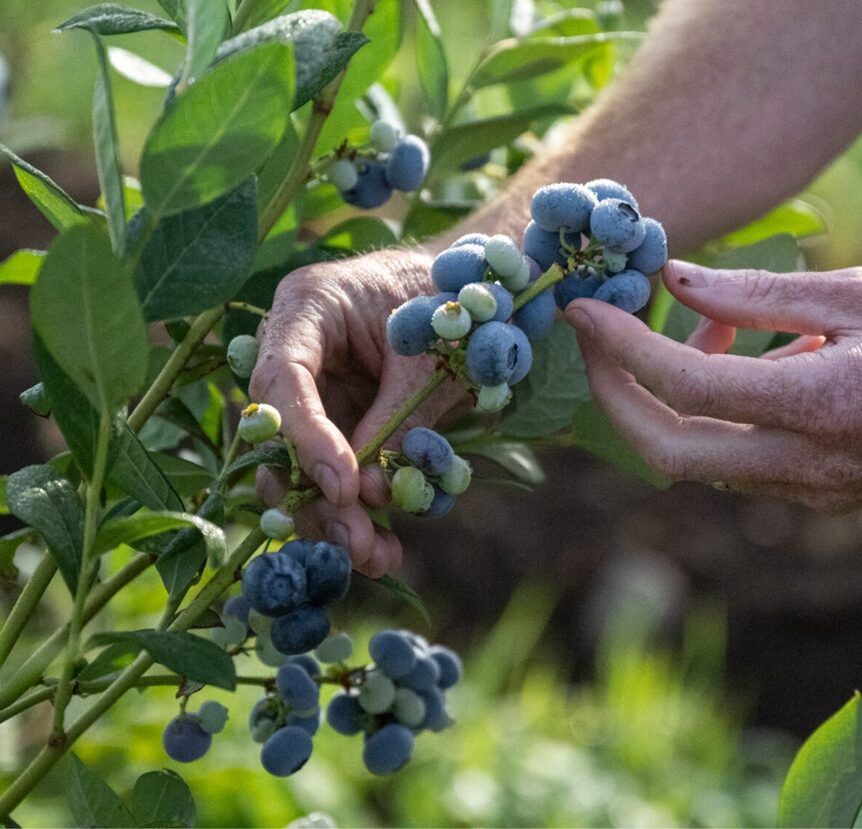In most perennial crops, next season’s buds are developed while the fruit is still on the tree, or during the post-harvest period. At these stages, targeted foliar applications of mineral nutrients and biology will increase the number, size, and quality of fruit buds as well as resistance to freezing, pests, and disease. Unfortunately, most growers stop nutritional applications after harvest, reducing next year’s fruit quality and missing out on a potential for profit.
Benefits that post-harvest applications bring next year:
- Increased spur leaf size – Most of the energy that the fruit receives is through spur leaves. Healthier spur leaves = healthier fruit.
- More successful pollination – Stronger reproductive structures provide a longer window for successful pollination and increased resilience to cold, pests, and diseases during the pollination period.
- Reduced disease susceptibility at blossoming – Reproduction is a nutrient-intensive process. An unhealthy plant lacks additional resources to fend off diseases. Fall-applied nutrients minimize disease susceptibility in the next season.
- The cell division phase in fruit development determines the potential size of the fruit. Calcium is key to providing strong cell walls during this period and creating a higher potential size for the finished fruit.
Post-harvest applications will help the plant mobilize its available nutrients when dormancy breaks in the spring. Those nutrients will be available immediately when warmer days initiate bud swell-–even before nutrients are carried from the roots with the rising sap. Nutrients applied before dormancy will also support critical fruit development stages in the spring, from bud swell through fruit set.
Additionally, in the spring:
- the leaf’s surface area is small and presents limited capacity for foliar uptake.
- Rapid spring warming can condense the time from bud break to fruit formation.
- Operators may not have a chance to apply foliar nutrition as maturation can sometimes progress within a period of days.
The past season’s nutrient applications help buds respond to nutritional needs in seasons that move rapidly.
Key nutrients during post-harvest:
- Calcium is needed in abundance to assist sugar and nutrient movement from the roots out to the developing buds on the branches. It helps promote freeze resistance in buds before dormancy by improving cell membrane integrity.
- Boron helps move nutrients and sugars to the buds and improves size and freeze resistance.
- Manganese plays a vital role in bud development and helps buds maintain resistance to cold and biotic stressors. It also plays a crucial role in photosynthesis and is essential to ensure healthy development of pollination structures. Manganese is one of the more commonly deficient nutrients, so a post-harvest application brings significant benefits.
- Potassium helps promote freeze resistance in buds before dormancy. Think of it like this: potassium is in the same atomic family as sodium, and we know that sodium lowers the freezing temperature of water. Potassium can do the same thing inside bud cells, increasing their freeze resistance.
- Zinc assists with the growth of large spur leaves.
- Copper provides systemic disease resistance and sturdy, flexible stems.
AEA pairs custom foliar nutrient blends, informed by data from plant sap analysis, along with a unique combination of soil bacterial inoculants and microbial enhancers designed to pack nutrients into next year’s perennial buds.
AEA’s post-harvest nutrients can be co-applied with late-season foliar urea or other liquid nitrogen products.
Subscribe to our blog.
You'll get each post to your inbox (~1x/week).
You may unsubscribe at any time. We value your personal information. Here's our Privacy Policy.
"*" indicates required fields


